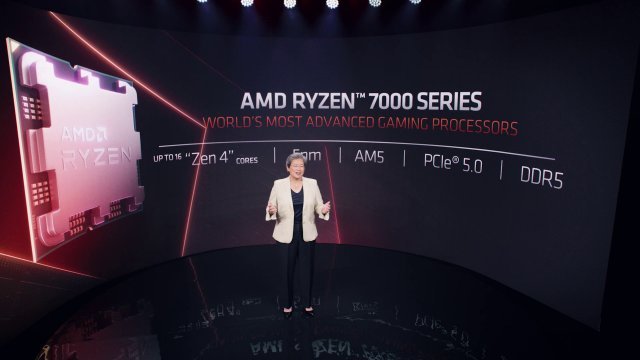
The saga of the 170 watts TDP in Ryzen 7000 is not over yet: AMD has now again clarified and confirmed that 170 watts is actually the TDP. It follows that the PPT is 230 watts.
However, Zen 4’s TDP and PPT cause some confusion. Initially, shortly after the presentation, it was agreed that it would be it is 170 watt PPT and as a result probably around 125 watts TDP. However, there were different statements in the documents and an inquiry to AMD did not initially provide the correct answer. However, it turns out that the US press materials and information from MSI are correct.
AMD’s EMEA marketing department has clarified today that the Zen 4 has a TDP (Thermal Design Power) of 170 watts. In conclusion, Ryzen 7000 has a PPT (Package Power Tracking) of 230 watts (170 x 1.35 = 229.5). That’s considerably more than the generation currently sold. But he also knows that larger models, in particular, quickly reach their artificial limits. AMD has now opened them up enough that they are no longer an issue.
Traditionally you always have to go the extra mile for the last few MHz. Around Ryzen 7000 at more than 5 GHz boost to achieve this, it seems that gaps have to be created despite the 5nm production. It would be assumed that the large models with 12 and 16 cores in particular would have had to slow down too much and come with a TDP of 170 watts. 65 and 105 watts remain in range. The IGP, presumably clocked at 256 shaders and 1.1 GHz, shouldn’t matter much and should generally be disabled.
AMD in the original wording:
“AMD would like to correct the TDP and socket power limits of the upcoming AMD Socket AM5. AMD Socket AM5 supports up to 170W TDP with up to 230W PPT. TDP*1.35 is the standard calculation for TDP vs. PPT for AMD sockets in the “Zen” era, and the new 170W TDP group is no exception (170*1.35=229.5).
This new TDP pool will enable considerably higher compute performance for high core count CPUs in heavy compute workloads, sitting alongside the 65W and 105W TDP pools that Ryzen is known for today. AMD prides itself on providing the enthusiast community with transparent and straightforward product capabilities, and we want to take this opportunity to apologize for our mistake and any subsequent confusion we may have caused on this issue.”